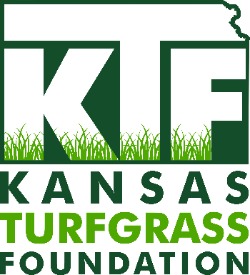Yellow Nutsedge (Cyperus esculentus)

Yellow nutsedge, sometimes called “nutgrass", is an extremely competitive warm season perennial grass-like plant. It may resemble grass but it is not a member of the grass family. It is actually part of the sedge family. Yellow nutsedge is easily identified by its triangular stem, three ranked leaves and wide (1/3-1/2 inches) glossy, yellow-green leaves which are strongly pointed. On the back of the leaf is a prominent mid-vein. Its color, texture, and rapid warm weather growth rate make it incompatible with turfgrasses. The foliage does not survive winters in the North Central region but the plant will survive via numerous underground tubers sometimes called “nutlets”, each of which give rise to new plants. During the growing months a mature plant forms an extensive network of these tubers which help it rapidly spread. Unmown, yellow nutsedge will produce a spiked straw brown colored seedhead and the closely related purple nutsedge has a brownish to purple seedhead.
Occurrence
Yellow nutsedge is frequently found in low lying, poorly drained portions of the landscape. It spreads via tubers, rhizomes and sometimes seed. It is capable of growth in numerous environments, full-sun, shade and all soil conditions. It is however, most competitive in moist to wet soils where desirable turfgrasses produce a low density thin turf and it may be the only plant to survive following extended flooded conditions. New plants emerge each year from tubers during late-spring to early-summer depending upon how quickly soil temperatures increase. You can expect to see nutsedge by father's day but sometimes much sooner. Most frequently, it invades the landscape by tubers transported with contaminated fill material or sometimes seed.
Non-Chemical Control
Proper cultural practices to maintain the health of the desired turfgrass species is the foundation for reducing infestations. Internal drainage in poorly drained areas should be improved, especially anywhere standing water occurs. Light, frequent daily irrigation applications, often associated with improperly used automatic irrigation systems should be avoided. If only a few plants are present in a young landscape, hand pulling as soon the plants become obvious may be an effective selective control. It is imperative that during hand pulling the entire root system and tubers are removed or the plant will re-grow. For mature plants or large infestations this is impractical. Hand pulling mature plants is extremely difficult because the shoots break off at the soil surface and the plant regrows.
Chemical Control
Traditional herbicides for grasses or broadleaf weeds are not effective on yellow nutsedge because this plant is a member of the sedge family and requires specific herbicides. Garden centers sell products to attempt to selectively eliminate this weed but the most effective herbicides, bentazon and halosulfuron which provide effective control without harming desirable turfgrasses must be applied by licensed commercial applicators. Another factor affecting control is the waxy leaf surface and the upright growth orientation which makes it difficult for herbicides to stick to the leaves. For best control time herbicide applications as soon as plants are observed and do not mow at least 2 days prior to or following application. Two or more herbicide applications will probably be required. Small spots in lawns can also be spot treated with a non-selective



